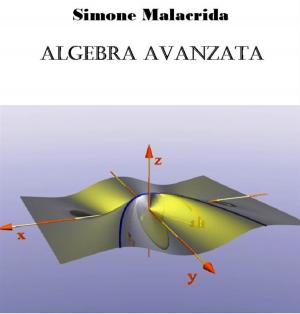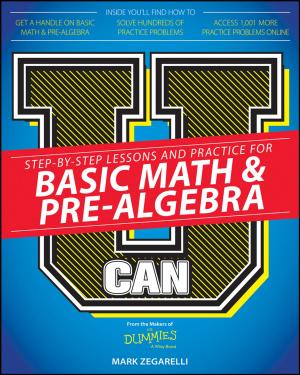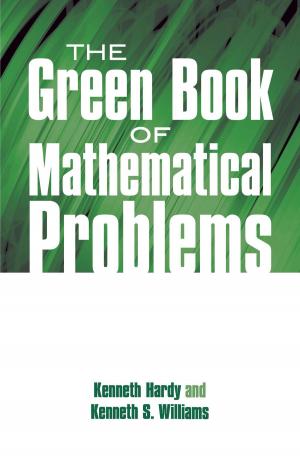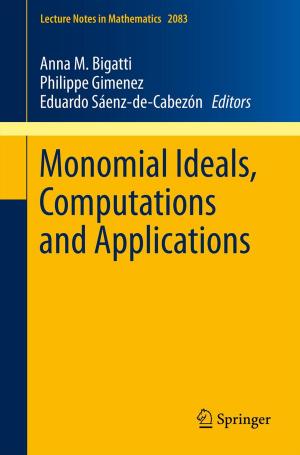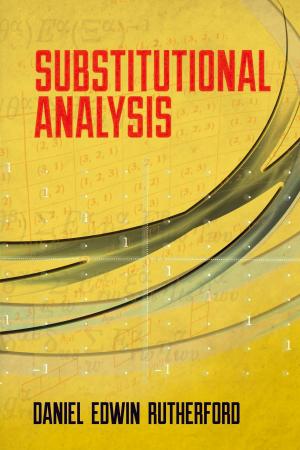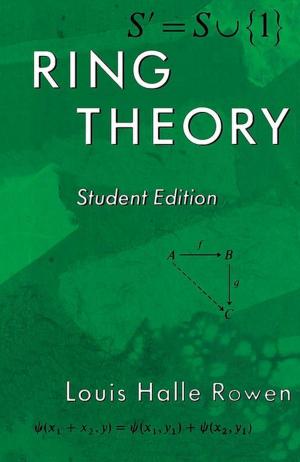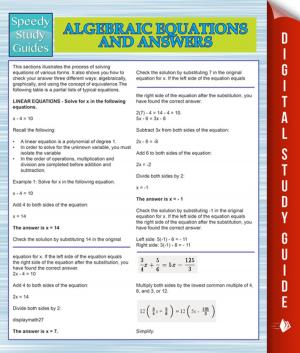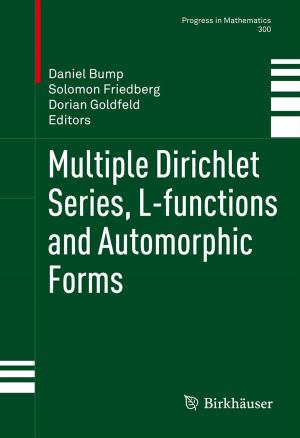The Foundations of Geometry (Illustrated)
Nonfiction, Science & Nature, Mathematics, Geometry, Algebra| Author: | David Hilbert, PH. D. | ISBN: | 1230000125773 |
| Publisher: | Hilbert | Publication: | April 19, 2013 |
| Imprint: | Language: | English |
| Author: | David Hilbert, PH. D. |
| ISBN: | 1230000125773 |
| Publisher: | Hilbert |
| Publication: | April 19, 2013 |
| Imprint: | |
| Language: | English |
The Foundations of Geometry
Geometry, like arithmetic, requires for its logical development only a small number of simple, fundamental principles. These fundamental principles are called the axioms of geometry. The choice of the axioms and the investigation of their relations to one another is a problem which, since the time of Euclid, has been discussed in numerous excellent memoirs to be found in the mathematical literature.
This problem is tantamount to the logical analysis of our intuition of space.
The following investigation is a new attempt to choose for geometry a simple and complete set of independent axioms and to deduce from these the most important geometrical theorems in such a manner as to bring out as clearly as possible the significance of the different groups of axioms and the scope of the conclusions to be derived from the individual axioms.
Contents:
CHAPTER I
THE FIVE GROUPS OF AXIOMS
1. The elements of geometry and the five groups of axioms
2. Group I: Axioms of connection
3. Group II: Axioms of Order
4. Consequences of the axioms of connection and order
5. Group III: Axiom of Parallels (Euclid’s axiom)
6. Group IV: Axioms of congruence
7. Consequences of the axioms of congruence
8. Group V: Axiom of Continuity (Archimedes’s axiom)
CHAPTER II.
THE COMPATIBILITY AND MUTUAL INDEPENDENCE OF THE AXIOMS.
9. Compatibility of the axioms
10. Independence of the axioms of parallels
11. Independence of the axioms of congruence
12. Independence of the axiom of continuity
CHAPTER III.
THE THEORY OF PROPORTION.
13. Complex number-systems
14. Demonstration of Pascal’s theorem
15. An algebra of segments, based upon Pascal’s theorem
16. Proportion and the theorems of similitude
17. Equations of straight lines and of planes
CHAPTER IV.
THE THEORY OF PLANE AREAS.
18. Equal area and equal content of polygons
19. Parallelograms and triangles having equal bases and equal altitudes
20. The measure of area of triangles and polygons
21. Equality of content and the measure of area
CHAPTER V.
DESARGUES’S THEOREM.
22. Desargues’s theorem and its demonstration for plane geometry by aid of the axioms of congruence.
23. The impossibility of demonstrating Desargues’s theorem for the plane without the help of the axioms of congruence.
24. Introduction of an algebra of segments based upon Desargues’s theorem and independent of the axioms of congruence.
25. The commutative and the associative law of addition for our new algebra of segments.
26. The associative law of multiplication and the two distributive laws for the new algebra of segments .
27. Equation of the straight line, based upon the new algebra of segments
28. The totality of segments, regarded as a complex number system
29. Construction of a geometry of space by aid of a desarguesian number system.
30. Significance of Desargues’s theorem
CHAPTER VI.
PASCAL’S THEOREM.
31. Two theorems concerning the possibility of proving Pascal’s theorem
32. The commutative law of multiplication for an archimedean number system.
33. The commutative law of multiplication for a non-archimedean number system .
34. Proof of the two propositions concerning Pascal’s theorem Non-pascalian geometry.
35. The demonstration, by means of the theorems of Pascal and Desargues, of any theorem relating to points of intersection.
CHAPTER VII.
GEOMETRICAL CONSTRUCTIONS BASED UPON THE AXIOMS I–V.
36. Geometrical constructions by means of a straight-edge and a transferor of segments.
37. Analytical representation of the co-ordinates of points which can be so constructed.
38. The representation of algebraic numbers and of integral rational functions as sums of squares.
39. Criterion for the possibility of a geometrical construction by means of a straight-edge and a transferor of segments.
The Foundations of Geometry
Geometry, like arithmetic, requires for its logical development only a small number of simple, fundamental principles. These fundamental principles are called the axioms of geometry. The choice of the axioms and the investigation of their relations to one another is a problem which, since the time of Euclid, has been discussed in numerous excellent memoirs to be found in the mathematical literature.
This problem is tantamount to the logical analysis of our intuition of space.
The following investigation is a new attempt to choose for geometry a simple and complete set of independent axioms and to deduce from these the most important geometrical theorems in such a manner as to bring out as clearly as possible the significance of the different groups of axioms and the scope of the conclusions to be derived from the individual axioms.
Contents:
CHAPTER I
THE FIVE GROUPS OF AXIOMS
1. The elements of geometry and the five groups of axioms
2. Group I: Axioms of connection
3. Group II: Axioms of Order
4. Consequences of the axioms of connection and order
5. Group III: Axiom of Parallels (Euclid’s axiom)
6. Group IV: Axioms of congruence
7. Consequences of the axioms of congruence
8. Group V: Axiom of Continuity (Archimedes’s axiom)
CHAPTER II.
THE COMPATIBILITY AND MUTUAL INDEPENDENCE OF THE AXIOMS.
9. Compatibility of the axioms
10. Independence of the axioms of parallels
11. Independence of the axioms of congruence
12. Independence of the axiom of continuity
CHAPTER III.
THE THEORY OF PROPORTION.
13. Complex number-systems
14. Demonstration of Pascal’s theorem
15. An algebra of segments, based upon Pascal’s theorem
16. Proportion and the theorems of similitude
17. Equations of straight lines and of planes
CHAPTER IV.
THE THEORY OF PLANE AREAS.
18. Equal area and equal content of polygons
19. Parallelograms and triangles having equal bases and equal altitudes
20. The measure of area of triangles and polygons
21. Equality of content and the measure of area
CHAPTER V.
DESARGUES’S THEOREM.
22. Desargues’s theorem and its demonstration for plane geometry by aid of the axioms of congruence.
23. The impossibility of demonstrating Desargues’s theorem for the plane without the help of the axioms of congruence.
24. Introduction of an algebra of segments based upon Desargues’s theorem and independent of the axioms of congruence.
25. The commutative and the associative law of addition for our new algebra of segments.
26. The associative law of multiplication and the two distributive laws for the new algebra of segments .
27. Equation of the straight line, based upon the new algebra of segments
28. The totality of segments, regarded as a complex number system
29. Construction of a geometry of space by aid of a desarguesian number system.
30. Significance of Desargues’s theorem
CHAPTER VI.
PASCAL’S THEOREM.
31. Two theorems concerning the possibility of proving Pascal’s theorem
32. The commutative law of multiplication for an archimedean number system.
33. The commutative law of multiplication for a non-archimedean number system .
34. Proof of the two propositions concerning Pascal’s theorem Non-pascalian geometry.
35. The demonstration, by means of the theorems of Pascal and Desargues, of any theorem relating to points of intersection.
CHAPTER VII.
GEOMETRICAL CONSTRUCTIONS BASED UPON THE AXIOMS I–V.
36. Geometrical constructions by means of a straight-edge and a transferor of segments.
37. Analytical representation of the co-ordinates of points which can be so constructed.
38. The representation of algebraic numbers and of integral rational functions as sums of squares.
39. Criterion for the possibility of a geometrical construction by means of a straight-edge and a transferor of segments.

